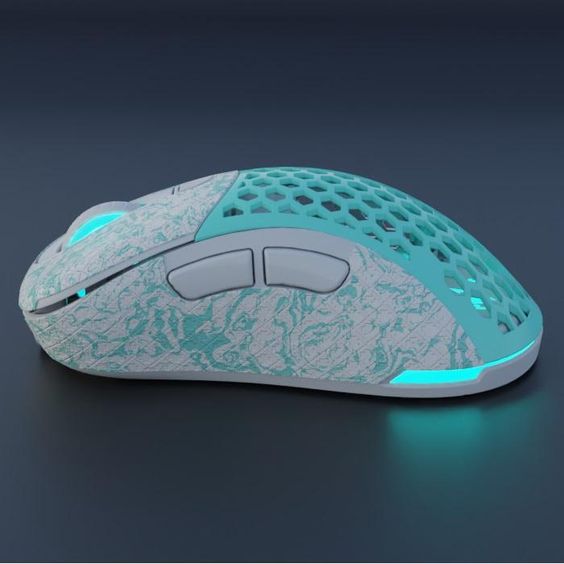Gaming mice have become an essential piece of equipment for anyone looking to take their gameplay to the next level. From high-DPI sensors to customizable RGB lighting, a good gaming mouse can make a world of difference in terms of precision, comfort, and performance. However, with so many options on the market, finding the perfect one can feel overwhelming. This guide will break down what to look for in a gaming mouse, the types available, and how to choose the best one for your needs.
1. Why a Gaming Mouse Matters
Regular computer mice are adequate for basic tasks, but when it comes to gaming, precision and speed are everything. Gaming mice are designed with gamers in mind, featuring specialized sensors, extra buttons, ergonomic designs, and adjustable settings that allow for more accurate and faster responses. These features provide advantages in competitive gaming, where split-second decisions can mean the difference between victory and defeat.
2. Key Features to Look for in a Gaming Mouse
a. DPI (Dots Per Inch)
DPI refers to how sensitive the mouse is to movement. The higher the DPI, the less you need to move the mouse to cover a specific area on the screen. Most gaming mice offer adjustable DPI settings, often ranging from 200 to over 20,000 DPI, allowing you to fine-tune the sensitivity to suit your play style. High DPI settings are ideal for quick reactions, while lower DPI offers more control for precise movements.
b. Polling Rate
The polling rate indicates how often the mouse reports its position to the computer, measured in Hertz (Hz). A higher polling rate (such as 1000 Hz) reduces the time between movements, resulting in smoother tracking. For most gamers, a polling rate of 500 to 1000 Hz is sufficient.
c. Sensor Type: Optical vs. Laser
Gaming mice generally use either optical or laser sensors. Optical sensors tend to be more accurate for gaming, especially for fast-paced FPS games. Laser sensors, however, work on a broader range of surfaces, making them more versatile but slightly less precise in certain conditions.
d. Buttons and Programmability
Extra buttons allow for customized gameplay, especially in genres like MOBAs and MMOs, where specific actions or commands are frequent. Many gaming mice come with customizable buttons that can be programmed to perform various functions, giving you a significant advantage by allowing you to execute complex actions quickly.
e. RGB Lighting
While RGB lighting doesn’t impact gameplay, it’s a popular aesthetic choice among gamers. Many gaming mice come with customizable RGB zones, letting you personalize your setup to match your gaming rig.
f. Wired vs. Wireless
Wired mice are typically faster and more reliable, as they don’t require batteries or suffer from latency. However, recent advancements in wireless technology have made wireless gaming mice much more responsive and competitive. Wireless mice are great for players who value a clean, cable-free setup or need a portable option.
3. Types of Gaming Mice
Gaming mice are designed to accommodate different game genres and playing styles. Here are a few popular types:
a. FP (First-Person) Mice
These mice are built for precision and speed, often featuring lightweight designs, high DPI, and only a few extra buttons to avoid distractions. Some FPS mice also have sniper buttons, which instantly lower DPI for more precise aiming.
b. MOBA/MMO Mice
For games requiring frequent commands and abilities, MOBA/MMO mice come with a higher number of programmable buttons (often in a grid layout on the side). These extra buttons allow for quick access to abilities or items, improving reaction times in complex scenarios.
c. Ambidextrous Mice
Ambidextrous gaming mice are symmetrical and can be used by both right-handed and left-handed players. They are ideal for gamers who prefer a claw or fingertip grip style.
d. Ergonomic Mice
Designed with comfort in mind, ergonomic gaming mice are shaped to fit the natural curve of your hand, reducing strain during long gaming sessions. They are often preferred by gamers who use a palm grip.
4. Grip Styles: Finding the Right Fit
Your grip style plays a crucial role in determining which mouse will feel the most comfortable. There are three main grip styles:
- Palm Grip: The entire hand rests on the mouse, with the fingers laying flat. Palm grip users often prefer larger, ergonomic mice.
- Claw Grip: The fingertips and part of the palm contact the mouse, allowing for more precise movements. Claw grip users may prefer smaller mice with a high arch.
- Fingertip Grip: Only the fingertips touch the mouse, offering maximum agility. Fingertip grip users typically prefer smaller, lighter mice.

